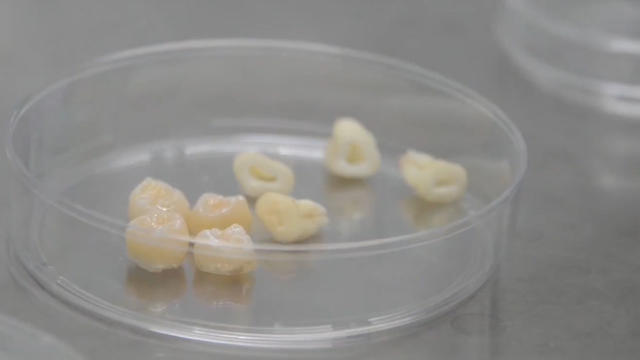Mexico has become a groundbreaker in regenerative medical science. And one institution is touting innovative ways to reduce the prohibitive costs of the therapy. CGTN’s Alasdair Baverstock reports.
Stem cells are the body’s building blocks; primitive cells capable of developing and multiplying into different biological tissues… the cornerstone of regenerative medical science.
Still a relatively new form of treatment, it is both economically inaccessible for many, and controversial for others.
But researchers in Mexico, led by Rene Garcia, believe they have found the solution to both these prohibitive factors – by harvesting stem cells from teeth.
“When my son was born, I wanted to save the stem cells from his placenta, but the process was too expensive, so as a science student I extracted them myself,” he said. “Years later, when his teeth began to develop, I tested the pulp in a baby tooth which had fallen out, and found it to be rich in the same material.”
“It’s a finding I want to share with society,” he added.
Research has found that the pulp inside our teeth is a rich source of stem cells.
Garcia said that by harvesting these, whether from baby teeth or surgically-removed wisdom teeth, the cells can be multiplied, cryogenically frozen, and used later in life in treatments to alleviate a variety of health problems.
“We can extract the stem cells from a baby tooth that would otherwise be discarded, and freeze them for use fifty years later,” he said. “A person discards twenty baby teeth, plus four wisdom teeth later on, so we are talking about an enormous bank of one’s own stem cells which can be built up for use as and when they are required.”
Dr. Rosalvira Nuñez, a leading figure in Mexican regenerative medicine, explained that, “As people take notice of our research, we want to encourage them not only to become organ donors, but to donate rich sources of cells as well. To save their children’s baby teeth, and to donate wisdom teeth when they are removed, in order not only to help this science advance, but also to give themselves a source of their own stem cells when they need them.”
The researchers said that while the teeth’s hidden properties have been an exciting discovery, the best is yet to come for regenerative medicine.
As stem cell research continues to advance in Mexico, extending the possibilities for regenerative medicine, Mexican researchers said the hope is that its practice elsewhere will catch up with them.
 CGTN America
CGTN America

